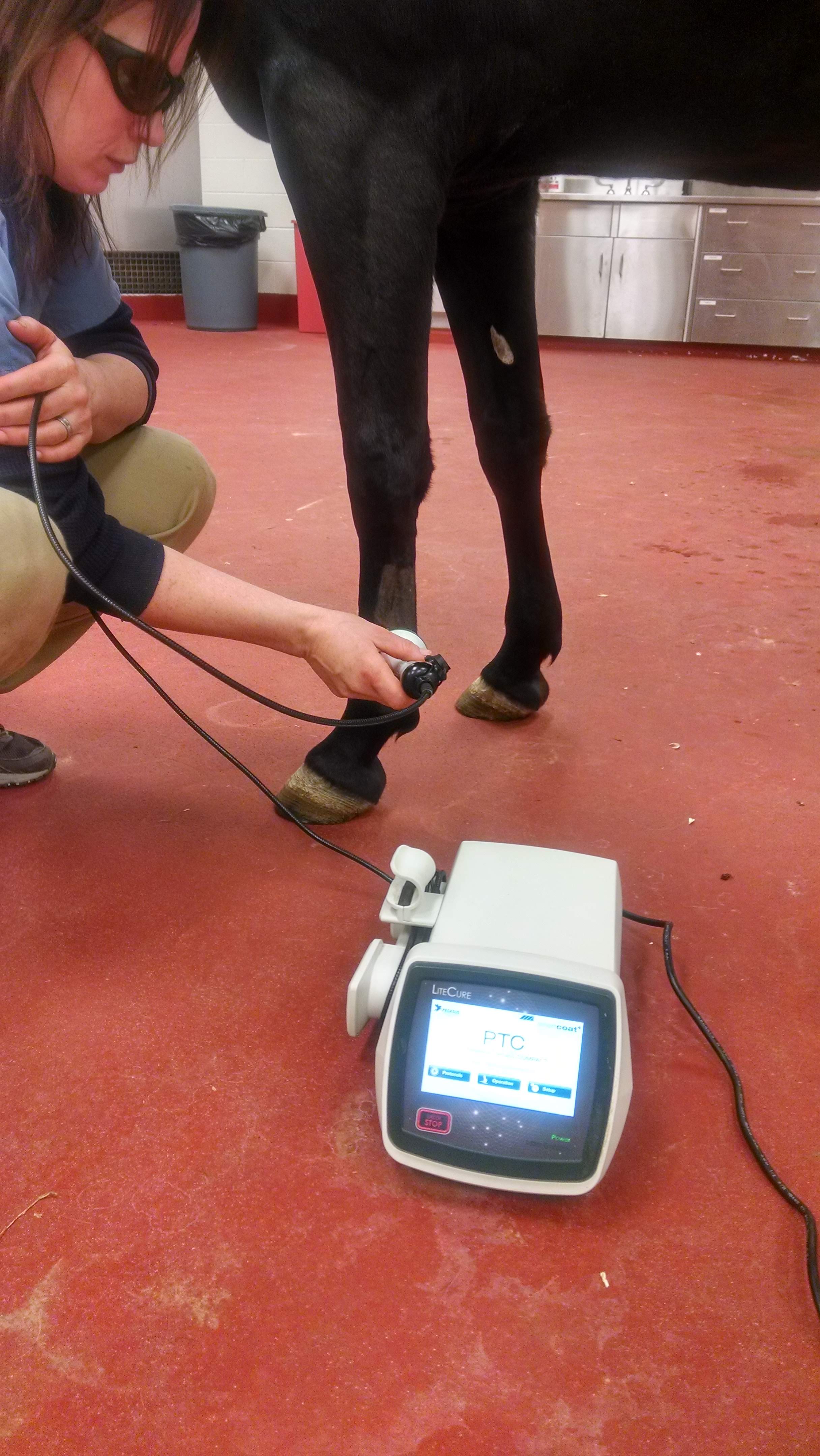The Power of Equine Therapy for Anxiety, PTSD, and Emotional Recovery
Reviewing the Efficiency of Laser Therapy in Horse Treatment for Injury Recovery
The analysis of laser treatment's effectiveness in equine injury rehab pivots on numerous factors, including recovery time, pain mitigation, and cells regrowth. Vets regularly observe superior outcomes with laser therapy compared to conventional techniques, placing it as an essential aspect in equine care. Equine Therapy.

Comprehending Laser Therapy
Laser therapy has actually come to be an essential device in veterinary medicine, particularly in the treatment of equine problems. Recognized for its non-invasive nature and effectiveness, laser therapy includes the application of specific wavelengths of light to stimulate tissue repair work and decrease inflammation. This healing method is progressively favored for its ability to increase the recovery process in horses dealing with a selection of bone and joint injuries and persistent conditions.
The main mechanism behind laser treatment is its capability to enhance mobile functions. In addition, laser therapy advertises vasodilation, improving blood circulation and oxygen distribution to damaged cells, therefore quickening healing.
In equine medicine, laser therapy is particularly helpful for conditions such as tendonitis, osteo arthritis, and wound healing. The technique is lauded for its pain-relieving homes, permitting equines to reclaim movement and feature extra rapidly. Vets additionally appreciate its marginal side effects contrasted to various other treatment modalities, making it a trusted and safe alternative for equine treatment.
How Laser Therapy Functions
To recognize how laser therapy functions, it is essential to look into the communication between light energy and biological cells. Laser treatment, additionally referred to as Low-Level Laser Therapy (LLLT) or photobiomodulation, utilizes certain wavelengths of light to pass through tissues and boost cellular processes. The system rests on the absorption of photons by cell chromophores, primarily within the mitochondria, which are critical for energy production.
Upon absorption, these photons activate a series of biochemical adjustments, boosting mitochondrial function and leading to enhanced adenosine triphosphate (ATP) production. This increase in ATP speeds up cellular metabolic process, promoting tissue repair service and regrowth. Furthermore, laser treatment regulates inflammatory actions by impacting cytokine degrees and minimizing oxidative anxiety, consequently relieving discomfort and swelling.
Another substantial element of laser treatment is its function in enhancing microcirculation. The treatment promotes vasodilation, boosting blood circulation and oxygen delivery to broken tissues. This facilitates the elimination of cellular particles and sustains the proliferation of fibroblasts and collagen synthesis, important for wound recovery.
Medical Proof
The efficiency of laser therapy in equine treatment has actually been substantiated through different professional studies, showcasing its therapeutic prospective throughout a range of conditions. A research study performed by Turner et al. (2012) showed that horses treated with low-level laser therapy (LLLT) for tendon injuries displayed accelerated healing compared to those straight from the source getting traditional therapies.
Similarly, study by Johnson and colleagues (2015) focused on equine muscle mass injuries, disclosing that laser therapy dramatically quickened muscle mass fiber regrowth and reduced muscle mass tightness. Clinical assessments have revealed that laser treatment can reduce persistent conditions such as osteo arthritis.
Veterinarian Insights
Vet professionals have progressively recognized the worth of laser therapy in equine therapy, mentioning both empirical proof and firsthand experience. Dr. Jane Smith, a leading equine vet, notes that laser treatment has revealed amazing efficacy in decreasing swelling and speeding up tissue repair work. "In my method, I've observed quicker recuperation times in equines treated with laser treatment contrasted to typical methods," she specifies. This sentiment is resembled by Dr. John Doe, that highlights that laser treatment offers a non-invasive option with marginal negative effects, making it specifically suited for equine patients.
Vets additionally appreciate the versatility of laser therapy. She points out that laser therapy can be customized to the specific needs of each horse, guaranteeing optimal outcomes.

Practical Considerations
A key facet of applying laser therapy in equine treatment includes understanding the functional factors to consider that guarantee its effectiveness and safety. Most importantly, it is crucial to choose the suitable laser device, as different types vary in wavelength, power, and penetration deepness. Veterinarians need to be well-versed in these criteria to tailor therapy protocols successfully to each injury kind
Furthermore, the regularity and duration of laser treatment sessions need cautious preparation to maximize restorative go advantages while reducing any kind of potential negative results. Consistent surveillance of the equine's action to therapy can direct needed adjustments in the therapy program. Developing a safe and controlled atmosphere throughout treatments is also necessary to prevent unintentional exposure to laser discharges, which can harm both the horse and the handler.
Educating and qualification of personnel administering laser therapy are vital to make certain correct technique and to support security requirements. In addition, maintaining precise records of each session, consisting of laser setups and observed results, is crucial for reviewing the total effectiveness of the treatment and for making data-driven decisions.
Conclusion
Laser therapy has emerged as an effective modality in equine injury rehabilitation, offering substantial advantages in recuperation time, discomfort relief, and cells recovery. Clinical research studies emphasize substantial renovations in problems such as tendonitis and osteo arthritis, credited to boosted mobile function and enhanced ATP production. Veterinarian monitorings corroborate these searchings for, highlighting premium results compared to conventional therapies. For optimum outcomes, constant monitoring and individualized treatment methods remain crucial in leveraging the complete capacity of laser treatment this content in equine treatment.